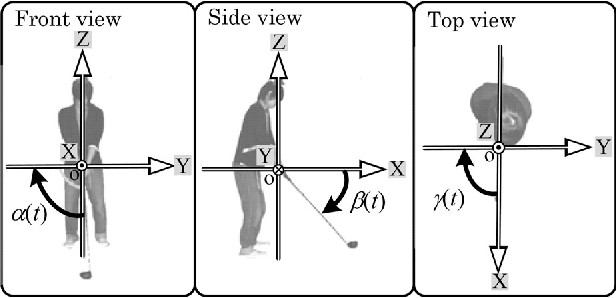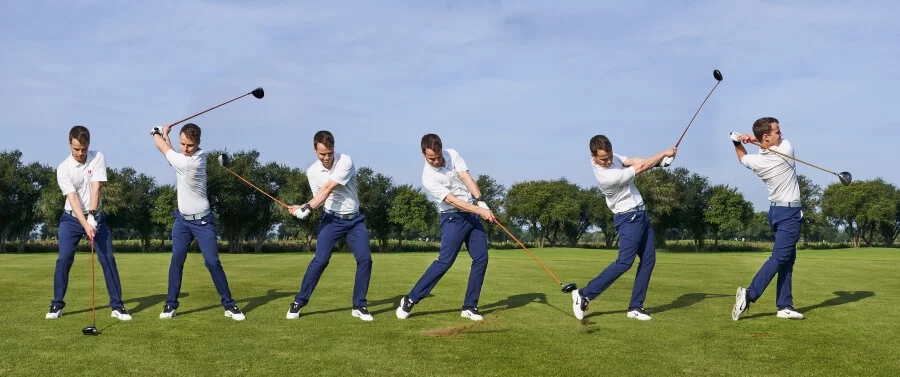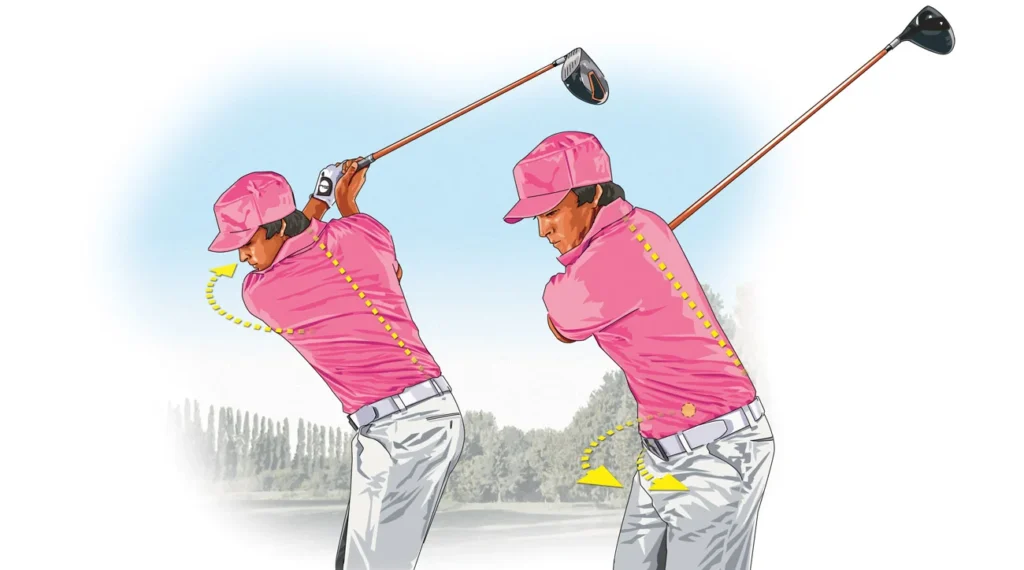Basic Golf Swing Mechanics
Golf can be a tricky sport to master, but one of the most important skills you’ll need to develop is a solid golf swing. Whether you’re a newbie or someone who’s been hitting the greens for a while, understanding the Basic Golf Swing Mechanics can make a world of difference in your game. Don’t worry, though – you don’t need to be a pro to get the hang of it. With a few simple adjustments and some practice, you’ll start feeling more confident and consistent with each shot.
In this guide, we’ll break down the essential components of a golf swing, from your grip to your follow-through. We’ll give you practical tips, clear instructions, and a few common mistakes to avoid. And since we know how overwhelming golf can be when you’re just starting out, we’ll keep things light, easy to understand, and hopefully a little fun. Ready to get started? Let’s dive in!
Getting a Grip: The Foundation of Your Basic Golf Swing Mechanics

A proper grip is the first step to a successful swing. It may seem simple, but trust me, the way you hold your club will significantly affect how the ball travels.
How to Grip a Golf Club:
- Neutral Grip: The most common grip for beginners is the neutral grip. With your left hand (for right-handed players), hold the club with your thumb pointing down the shaft. Your right hand should then overlap or interlock with your left, ensuring your palms face each other.
- Avoiding Tension: Don’t squeeze too hard. A tight grip can lead to tension in your arms and shoulders, which can affect your swing. Instead, hold the club with a firm but relaxed grip – think of it like holding a tube of toothpaste: firm enough that it doesn’t slip, but not so tight that you’re going to pop the cap off.
- Tip: The correct grip is the foundation of your entire swing. If your grip is off, it’s like building a house on an unstable foundation – everything else will fall apart.
Stance and Posture: Setting Up for Success
Before you even start your backswing, it’s crucial to get your stance right. Your posture and body alignment can make or break your shot.
How to Stand:
- Feet: Position your feet shoulder-width apart, ensuring they’re parallel to the target line. If you’re using a driver or fairway wood, you might want to spread your stance a little wider, while with shorter irons, you’ll keep it a bit closer.
- Knees: Slightly bend your knees – don’t lock them! The key here is a relaxed, athletic posture that allows for fluid movement.
- Back: Keep your back straight and bend forward from your hips, not your waist. Think about how you’d stand if you were about to jump or run; it’s a stable and balanced position.
- Tip: Imagine you’re setting up for a high jump. You want to be ready to spring into action, not stiff as a board. A good, athletic stance helps your body move freely and makes your swing feel more natural.
- For more in-depth articles on improving your golf skills, visit our golf Irons reviews and tips for beginners.
Backswing: Building Power

Now we’re ready to talk about the backswing, where you start to build the power and motion for your shot. The backswing is essentially the “wind-up” of your golf swing.
How to Begin the Backswing:
- Turn, Don’t Lift: As you begin your backswing, focus on turning your shoulders rather than simply lifting the club with your arms. Your weight should shift to the inside of your back foot as your hips and shoulders rotate.
- Club Position: At the top of your backswing, the club should be parallel to the ground, and your arms should form a “V” shape. The key is to make sure you’re not overextending or over-rotating; you want a smooth, controlled motion.
- Tip: Think of the backswing as a coiled spring. The more controlled and tight you keep your coil, the more power you’ll release when you hit the ball.
Downswing: The Moment of Truth
Ah, the downswing. This is where you transfer all that energy from your backswing into your shot. This is also where a lot of beginners run into trouble, so pay close attention.
How to Start the Downswing:
- Initiate with Your Hips: The key to a strong downswing is starting the motion with your hips, not your arms. As you shift your weight from your back foot to your front foot, your hips should rotate toward the target, followed by your torso and arms.
- Keeping Your Head Steady: While it might be tempting to look up to see where the ball is going, keep your head down and your eyes on the ball until after impact. This helps you maintain a consistent strike.
- Tip: Many beginners try to muscle the ball with their arms, but the real power comes from your body’s rotation. Think of your hips leading the way – the arms just follow along.
Follow-Through: Completing the Swing
The follow-through is just as important as the backswing and downswing. It’s the finishing touch that ensures you’ve made a full and controlled swing.
How to Finish Your Swing:
- Balanced Finish: As you follow through, your body should naturally rotate, and you’ll end up in a balanced, almost “pose-like” position. Your weight should shift to your front foot, and your chest should face the target.
- Club Position: The club should finish high, with the shaft pointing towards the sky. Your arms should remain extended, with the club head naturally following the arc of the swing.
- Tip: Don’t force the follow-through. It should feel like a natural progression from your downswing. If you’re too stiff or trying too hard to finish the shot, you’ll lose control.
Common Mistakes to Avoid

Now that we’ve covered the basics, let’s talk about a few common mistakes that tend to trip up beginners. Don’t worry if you make these; just know what to look out for so you can fix them.
- Over-swinging: Trying to hit the ball too hard can cause you to lose control and accuracy. Focus on a smooth, consistent swing instead.
- Incorrect Grip Pressure: A grip that’s too tight can make you tense up, while a grip that’s too loose can make it hard to control the club. Find that sweet spot of firmness, but not too much.
- Lifting Your Head Too Soon: It’s tempting to look up and see where the ball’s going, but lifting your head too early leads to poor contact. Keep your eyes on the ball until after the shot.
- Not Shifting Weight Properly: A good swing involves weight transfer from the back foot to the front foot. Failing to shift your weight properly can result in a weak shot.
For more tips on improving your golf game, check out Golf Digest’s Swing Basics and Golf.com’s Beginner’s Guide.
Practice Makes Perfect
Now that you know the basic mechanics of a golf swing, the most important thing to remember is that practice is key. Even the best golfers in the world spent years refining their swings. Don’t get discouraged if you don’t see instant results – take your time, be patient with yourself, and have fun along the way.
A great way to improve is by practicing with a purpose. Work on one part of your swing at a time (e.g., grip, stance, or follow-through) until it feels natural. You can also take lessons from a golf professional who can give you tailored advice and feedback.
Conclusion: Keep Swinging and Keep Improving

The mechanics of a golf swing may seem overwhelming at first, but don’t let that discourage you. Remember, every golfer was once a beginner, and it’s the practice and persistence that make the difference. Whether you’re just starting out or looking to improve your swing, keep these basics in mind, stay patient, and trust the process.
With each swing, you’re one step closer to mastering the game. And remember – even the best pros had to start somewhere, so don’t be too hard on yourself. Now, grab your clubs and get swinging!







